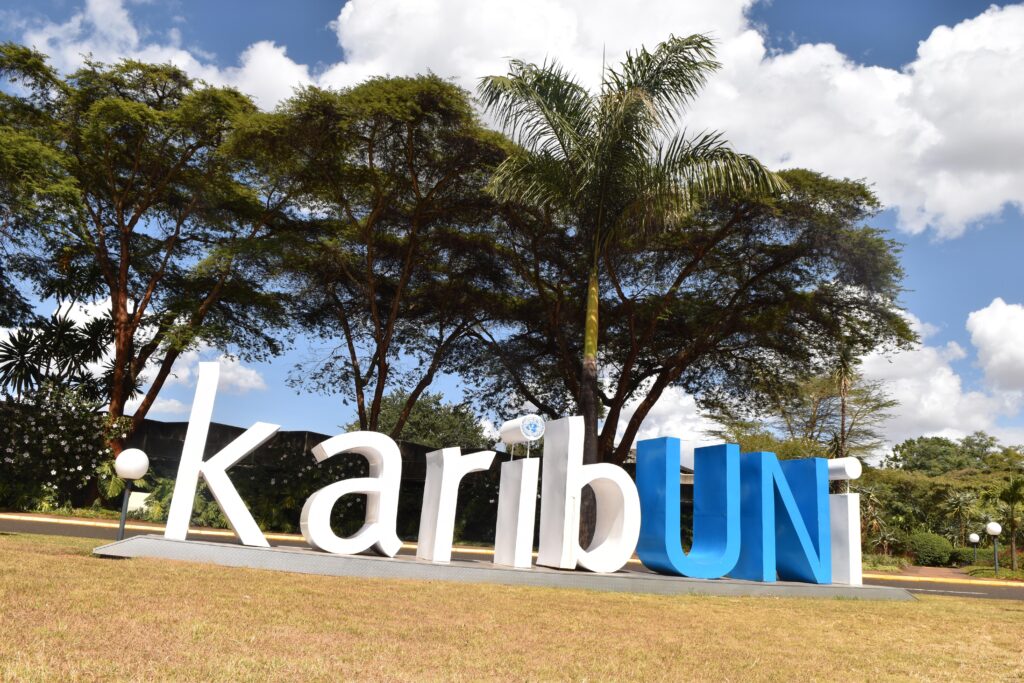UNIS Nairobi Launches SDGs in Braille and Sign Language as Kenya Commits to Disability Inclusion
In a groundbreaking initiative aimed at fostering inclusivity, the United Nations Information Centre (UNIS) Nairobi has officially launched the Sustainable Development Goals (SDGs) in Braille and sign language. This pivotal move comes as Kenya reaffirms its commitment to disability inclusion, ensuring that vital information is accessible to all members of society, including those with visual and hearing impairments. The launch event underscores a significant shift towards equitable participation in national development efforts, aligning with the global agenda for sustainable development. As the country takes strides to accommodate diverse communities, the UN’s initiative sets a precedent for integrating inclusivity into policy and practice, reflecting a collective commitment to leaving no one behind.
UNIS Nairobi Pioneers Accessibility with Braille and Sign Language for SDGs
The United Nations Information Service (UNIS) Nairobi has taken a significant step towards fostering inclusivity and accessibility by launching the Sustainable Development Goals (SDGs) materials in both Braille and sign language. This initiative underlines Kenya’s commitment to ensuring that individuals with disabilities have equal access to critical information and resources necessary for sustainable development. The SDGs, which outline global objectives aimed at promoting prosperity while protecting the planet, are now available to those who rely on non-traditional formats for communication, thus bridging a crucial gap in information dissemination.
Key components of this initiative include:
- Accessibility Enhancements: Translations of SDG materials into Braille and sign language.
- Training Workshops: Sessions aimed at educating sign language interpreters and Braille educators.
- Community Engagement: Involving people with disabilities in discussions about sustainable development.
In addition to these efforts, a dedicated team will oversee the implementation of this program, ensuring continuous evaluation and adaptation to meet the needs of the community. Below is a summary of the goals spearheaded by this initiative:
| Goal | Description |
|---|---|
| Goal 1 | No Poverty |
| Goal 4 | Quality Education |
| Goal 10 | Reduced Inequalities |
This progressive approach serves not only to empower individuals but also to ensure that Kenya remains at the forefront of inclusive practices, reflecting the core principles of the United Nations in fostering a world where everyone can thrive regardless of their abilities.
Kenya’s Commitment to Disability Inclusion: Progress and Challenges Ahead
In a significant move towards fostering inclusivity, the United Nations Information Centre (UNIS) in Nairobi recently unveiled the Sustainable Development Goals (SDGs) in both Braille and sign language. This initiative is a testament to Kenya’s ongoing commitment to ensuring that individuals with disabilities are not left behind in the country’s development agenda. The event highlighted the importance of integrating accessibility into the fabric of public services and policies, reflecting a broader understanding that disability inclusion is pivotal for achieving the SDGs. Key figures at the launch emphasized that bridging the gap in information accessibility is essential for empowering disabled individuals and enabling their full participation in society.
Despite the strides made, challenges persist along the path to full disability inclusion. Some notable barriers include:
- Lack of awareness about rights and available resources among disabled persons.
- Inadequate infrastructure that hinders mobility and access to essential services.
- Limited training for professionals working with disabled individuals.
To effectively address these issues, a multi-faceted approach is necessary, incorporating collaboration among government, NGOs, and the private sector. Regular assessments and feedback from the disability community will be crucial to fine-tuning initiatives and ensuring that efforts are not only inclusive but also sustainably implemented. As Kenya moves forward, the challenge is to maintain momentum and transform policies into tangible, positive outcomes for all citizens.
Empowering All Citizens: Recommendations for Enhancing Disability Rights in Development Efforts
The launch of the Sustainable Development Goals (SDGs) in accessible formats such as Braille and Sign Language signifies a landmark step toward genuine inclusivity in Kenya’s development framework. Empowering individuals with disabilities cannot be a peripheral goal; it must be woven into the fabric of all development initiatives. To ensure effective participation of all citizens, the following recommendations should be considered:
- Enhancing Accessibility: All public spaces, information, and services should be tailored for accessibility, ensuring that facilities are navigable for everyone.
- Inclusive Policy Making: Involve persons with disabilities in the decision-making processes related to their rights and development needs.
- Awareness Campaigns: Launch educational campaigns to foster public understanding and support for disability rights within the community.
- Collaboration with Organizations: Partner with local and international NGOs focused on disability rights to share best practices and resources.
Additionally, the integration of specific data points can help measure progress and adjust strategies. Below is a concise overview of the current state versus desired outcomes in disability rights:
| Aspect | Current Status | Desired Outcome |
|---|---|---|
| Accessibility of Public Buildings | 60% compliant | 100% compliance by 2025 |
| Employment Rate for Persons with Disabilities | 30% | 50% inclusion in workforce by 2030 |
| Public Awareness on Disability Rights | 25% awareness | 75% awareness by 2025 |
Closing Remarks
In conclusion, the launch of the Sustainable Development Goals (SDGs) in Braille and sign language by UNIS Nairobi marks a significant step forward in promoting inclusivity and accessibility for individuals with disabilities in Kenya. This initiative not only underscores the country’s commitment to integrating disability inclusion into national development strategies but also serves as a pivotal reminder of the importance of ensuring that all voices are heard in the quest for a sustainable future. As the nation embraces these global goals, the hope is that they will pave the way for a more equitable society where everyone, regardless of their abilities, can participate fully in shaping their communities. The commitment shown today reinforces Kenya’s place as a leader in advocating for the rights and representation of people with disabilities, setting a precedent for others to follow.
